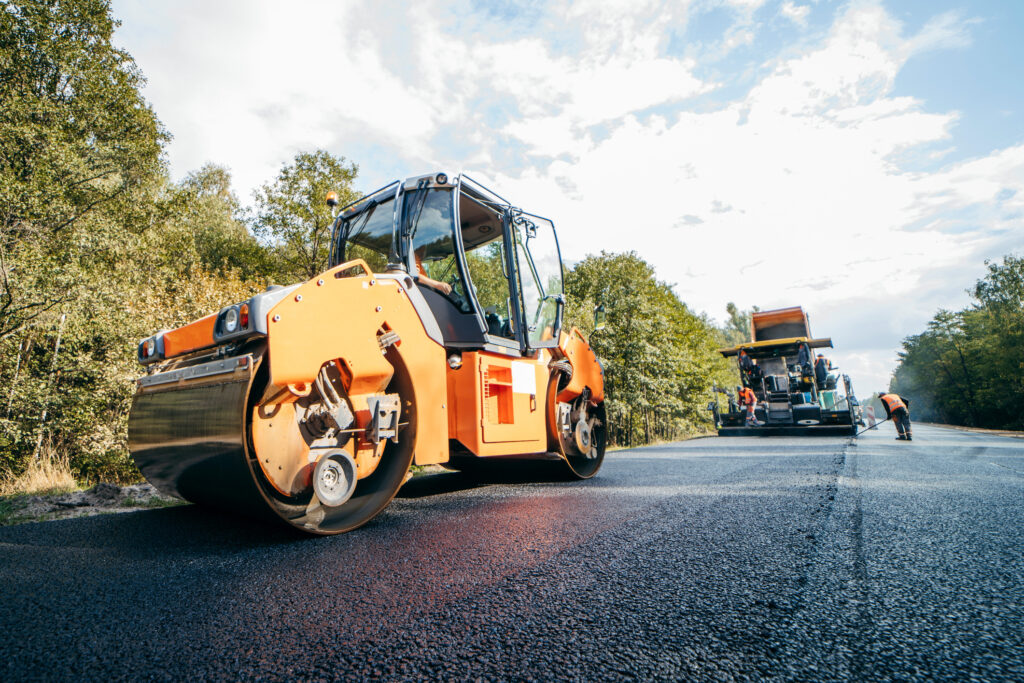Shifting gears
Car dealers undergoing transformation coming out of COVID, in preparation for arrival of electric vehicles

MICHAEL CRUMB Sep 13, 2022 | 7:54 pm
8 min read time
1,966 wordsBusiness Record Insider, TransportationCar dealerships, hit hard by supply chain shortages and reduced inventories, will continue to evolve as customers adapt to buying vehicles on pre-order. It could be well into 2023 or 2024 before the industry begins to settle into its new normal, industry experts said.
The inventory that car dealers have on their lots continues to be low in the second half of 2022. Depending on the manufacturer, dealers may find themselves with few if any cars on their lot for buyers to choose from, leaving prospective buyers to order a car and wait several months before they can take delivery.
In many cases the vast majority of cars sold today are sold on pre-order – as many as 90% depending on the make and model.
Car dealers were declared essential during the early days of the pandemic and were allowed to stay open. Sales rebounded by summer 2020, but as supply chain shortages related to the manufacturing of microchips needed to build cars worsened, fewer cars were being delivered to dealers by early 2021. That trend has continued, forcing dealers — and buyers — to adapt to make the sale.
Dealers and representatives of industry groups said they envision the current situation becoming the norm in the future, with fewer cars being in a dealer’s inventory, possibly requiring less of a physical footprint. What won’t decrease are the sales floor and service and parts departments, although those too will likely shift as manufacturers meet federal mandates for the production of electric vehicles.
According to data from the Iowa Automobile Dealers Association, Iowans have purchased and registered about 69,000 new vehicles this year through July. That includes customers who may travel across state lines to buy a vehicle. For example, someone from Council Bluffs buying a car in Omaha, Neb., would be among those numbers. Before the pandemic that number was around 165,000 a year, so 2022 is on pace to be about 30% below pre-pandemic sales levels.
Nationally, Americans purchased about 17 million new cars in 2019. That number declined to just over 15 million last year.
The Business Record spoke to dealers, members of the Iowa Automobile Dealers Association and the National Automobile Dealers Association to learn more about what the industry has experienced in the past few years, what their current status is and what the future might hold.
Recovering from the pandemic
Jason Willis, CEO of Willis Automotive in Des Moines, said the pandemic “really changed our business in a way that I don’t think anything else possibly could have.”
“Pre-pandemic, the strategy for a lot of manufacturers was market share and that was most important, and they’d get that by building as many cars as they could, selling them to dealers and flooding their lots and then selling them incentives,” Willis said. “You never knew exactly if you were getting a good deal because you had to call around to see if you were paying the same as someone else was paying elsewhere. Today our inventory is reduced where instead of operating on, let’s say, a 120-day supply, we’re operating on a zero-day supply on some brands with a max of about 30.”
Now, instead of a sales person working with a customer and showing them different cars, customers are coming onto the lot knowing what vehicle they want, Willis said.
Sales people have become consultants, helping customers decide which features best meet their needs and what color they want, and customers can order the car they’re looking for, Willis said.
“Yes, you’re going to have to wait, but the car you want is going to arrive instead of the car we’re throwing the most money at, saying it’s the best deal. So that whole guest-dealer relationship is so much stronger,” he said.
Willis said the pandemic also jump-started dealers’ online presence, with more customers than ever buying a car start-to-finish completely online, although that number is still small at about 5%.
“People still want to touch and feel and drive a vehicle and really understand what they’re getting, especially on the premium side of things, where each car is so unique,” he said. “They’re able to come into a business, and with software we have, where you stopped [looking] online in the process is where we can pick up in person. That is something the industry needed. It needed a couple of decades jump into the future, and COVID really allowed us to do that.”
David Wright, owner of the Subaru dealership in Hiawatha that bears his name, said the past few years have been a “wild and crazy ride” for the car industry.
He said it really started for his dealership in 2019 when a hailstorm caused $5.9 million in damage to his buildings and cars.
“So we were short on cars before COVID and then supply chain issues even came along,” he said.
Wright said when COVID hit, his business came to a stop.
“People were canceling orders, canceling cars and canceling service,” he said. “There was really no business at all. It really dried up as people hunkered down and tried to understand the pandemic. But in April and May of 2020, demand started to increase significantly for both new and used cars, which kind of caught us off guard.”
That resulted in a near record year for sales for his dealership, Wright said.
One service that never gained traction was pickup and delivery cars for maintenance and repair services.
“We offered our service customers that we would come get their car, do whatever maintenance or repair was needed, sanitize it and deliver it back to them, but people never really took advantage of that,” Wright said.
Then came the supply chain disruptions of 2021, which Wright said caused some initial panic buying by customers.
“That seemed to drive a lot of traffic, so 2021, even though supplies were very limited, was still another almost record year for sales for us,” Wright said.
One challenge was that his team has had to learn to sell more used cars to offset the new cars they weren’t receiving.
But that creates its own challenges, Wright said, as there isn’t the same volume of rental cars to choose from, there are fewer trade-ins and the inventory at auctions is down significantly.
“In 2022, nothing has changed; in fact my manufacturers have basically said that they will produce fewer cars, certainly no more cars than they did last year,” Wright said.
His dealership’s inventory is significantly less today than it used to be.
“I have zero available new Subarus for sale today,” Wright said in late August.
Most cars that do come in are pre-sold.
Historically he would have had 150 Subarus on his lot and about 100 Nissans, the other brand his dealership offers.
Now, if a customer orders a vehicle, the delivery time is about 90 days, but could be longer or shorter, depending on the model, features the customer selected and other factors.
Smaller footprints
Wright said the jury remains out on how lower inventories will affect dealerships.
“If manufacturers could continue to responsibly manufacture and not over-manufacture, I think the footprint from parking spaces would be reduced significantly,” said Wright, who has owned the dealership for 16 years. “I think the building footprint will still require a large number of staff. I don’t see the building itself shrinking.”
Bruce Anderson, president of the Iowa Automobile Dealers Association, said it’s possible dealers may not need as much outdoor space as inventories will likely remain smaller than before, but he sees a dealer’s buildings remaining intact with service demands continuing.
If dealers jettison some of their lot space, Anderson said he sees that as a win-win for the dealer and the community they serve. The space given up by a dealership could reduce their costs while providing opportunities for other commercial development, he said.
Typically, dealers would have about 45 days of inventory on their lots. Today dealers may have few if any cars of a particular model on their lot, and it’s unclear when that will turn around.
Anderson said it’s premature to say for sure what the future will hold.
“Although I will say that a dealership’s website is as valuable real estate today as their physical location,” he said. “That’s where automotive retailing happens, frankly, and the showrooms of the display lots are seriously underutilized today, so I think the dealership in the future is probably going to have a smaller footprint.”
Patrick Manzi, chief economist with the NADA, said before the pandemic inventories nationally were around 3.8 million vehicles. Today that is around 1.2 million.
“That inventory has been dictating everything,” Manzi said. “It’s really put a cap on sales.”
Is today the new normal of tomorrow?
Although some carmakers and dealers like smaller inventories, there will always be the temptation by manufacturers to chase market share and result in increased production, Manzi said.
“But we’re also in a world where we are dealing with supply chain disruptions from Ukraine and the war happening there, and we’re still dealing with the microchip shortage,” he said. “So at least for the next 18 to 24 months it seems like this low inventory is going to be the new normal in the short term.
“In the medium term, if you want to believe the manufacturers, then this is the new normal. But I’m more skeptical. I think they could easily revert to their old ways of overproducing and then putting the money on the hood in terms of incentive spending.”
Ukraine is a major supplier of wire harnesses used in foreign cars.
“And then the chip shortage is really going to continue to be an issue throughout most of next year,” Manzi said.
He said the industry may see sales increase by 100,000 vehicles more than today, but not enough to really matter.
Manzi said he expects to see quick turnarounds on vehicles that are delivered to a dealer, with most vehicles being already spoken for before they arrive.
“So there’s really no chance to build up inventory,” he said. “So we’re still working through the pent-up demand for both retail and fleet customers, and until that is dealt with we’re not going to be able to rebuild the inventories.”
Manzi said dealers are already preparing for the arrival of electric vehicles with training and information to inform customers. Some dealers have already begun renovating stores and building service bays to handle electric vehicles, and installing solar panels to support charging of electric vehicles.
“We’re thinking that just this initial investment to prepare to sell more electric vehicles is going to be around $2 billion to $3 billion across the country,” he said. “Dealers are definitely thinking about it. I would say it’s an exception that there’s a dealer not thinking about it.”
Although the market for electric vehicles will increase, the demand for parts and service for internal combustion engine vehicles won’t be going away anytime soon, Manzi said.
Willis said he expects the industry will continue to change.
“The massive lots, I don’t think you need to have those anymore going forward,” he said.
He said dealers will have to rethink collision centers and the future demand as self-driving cars are introduced. Willis expects to begin selling an autonomous vehicle within five years.
Dealers are also reviewing demands on their service centers with more electrical vehicles coming because they don’t need the same maintenance of fluids, and require different components than traditional vehicles.
“So what’s the demand on our parts and service departments moving forward?” Willis said. “We’re definitely looking at our infrastructure as we continue to change.”
“Our industry, not just because of COVID and supply chain issues, but also everything electric that is on the way, is at a massive turning point,” he said.










